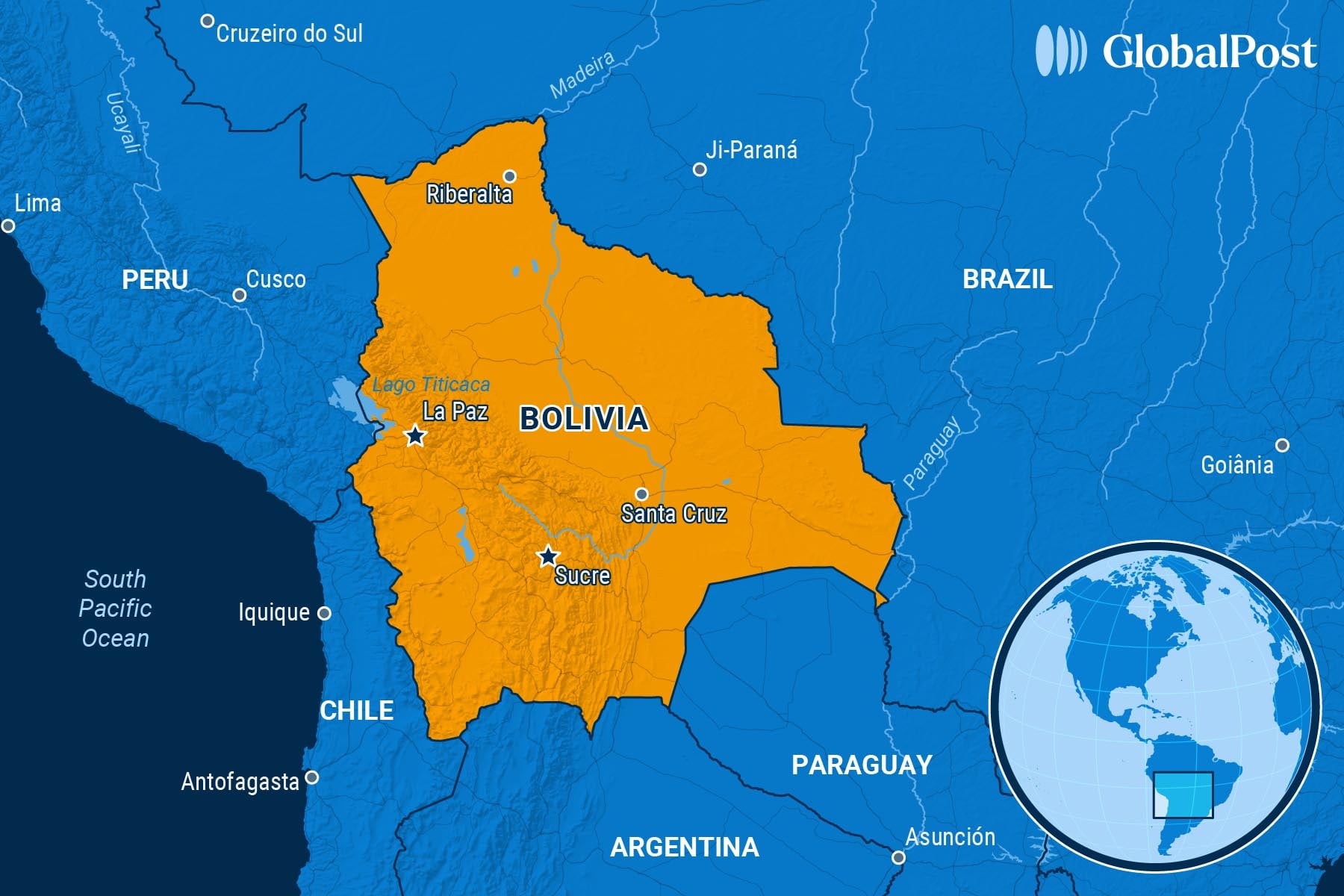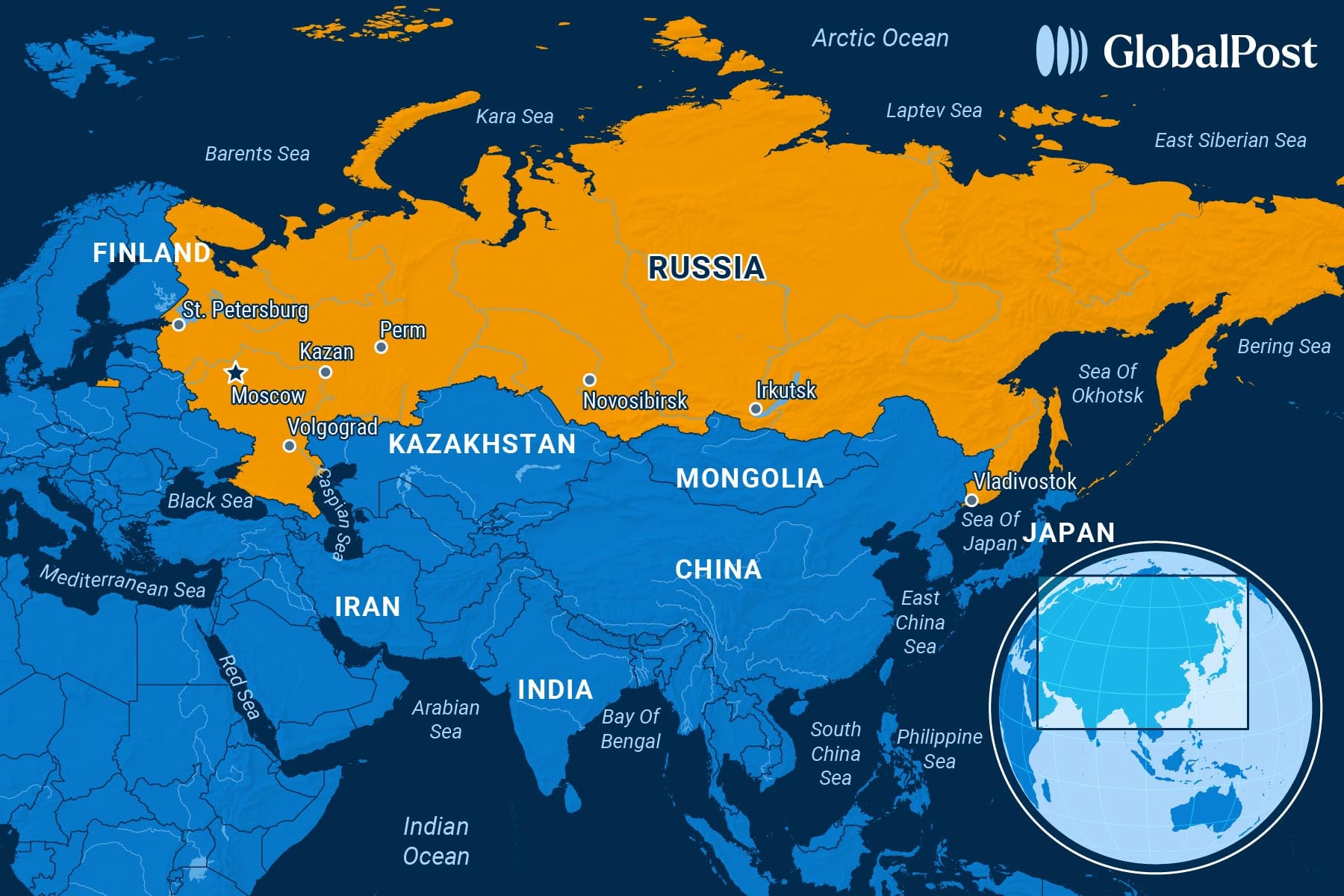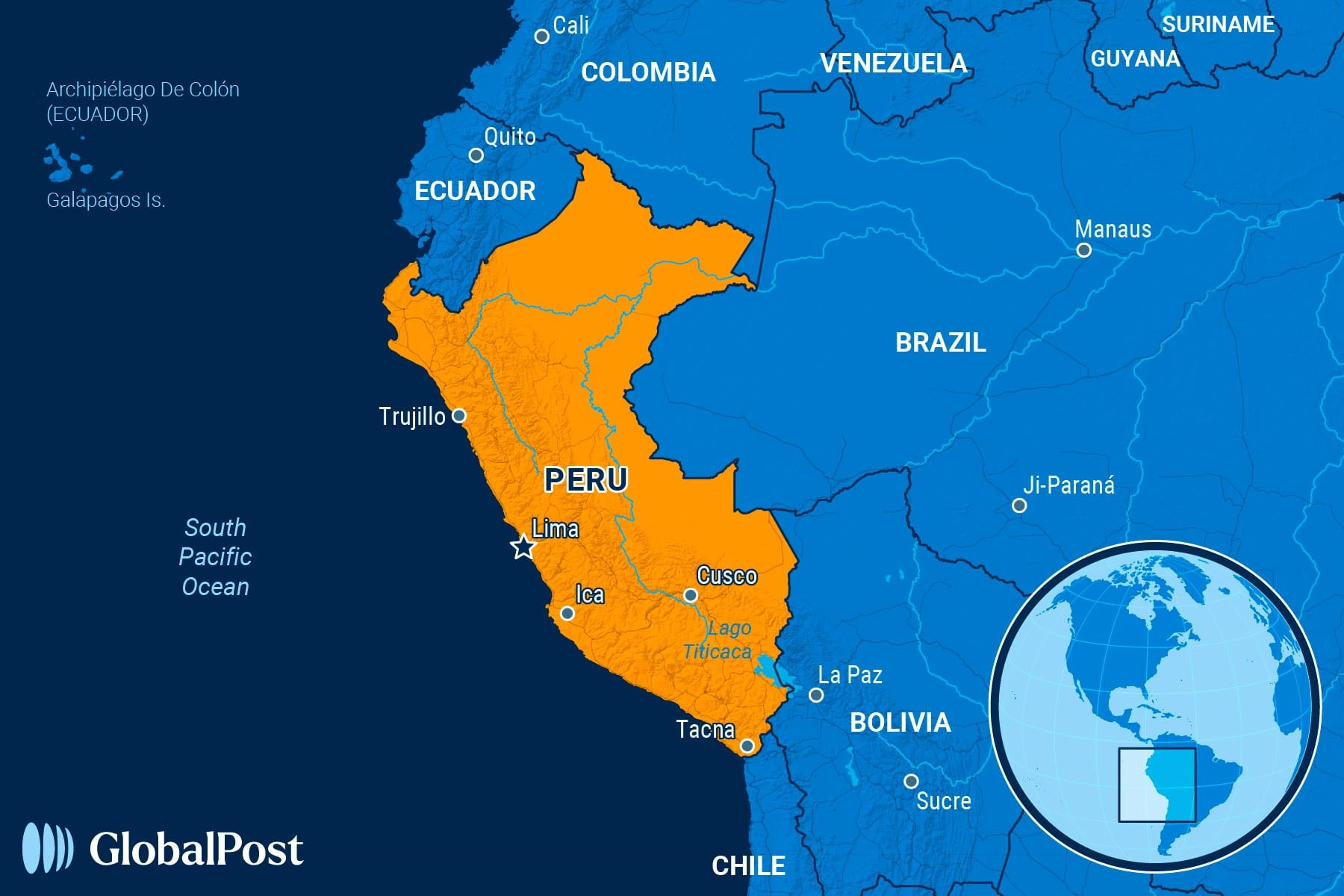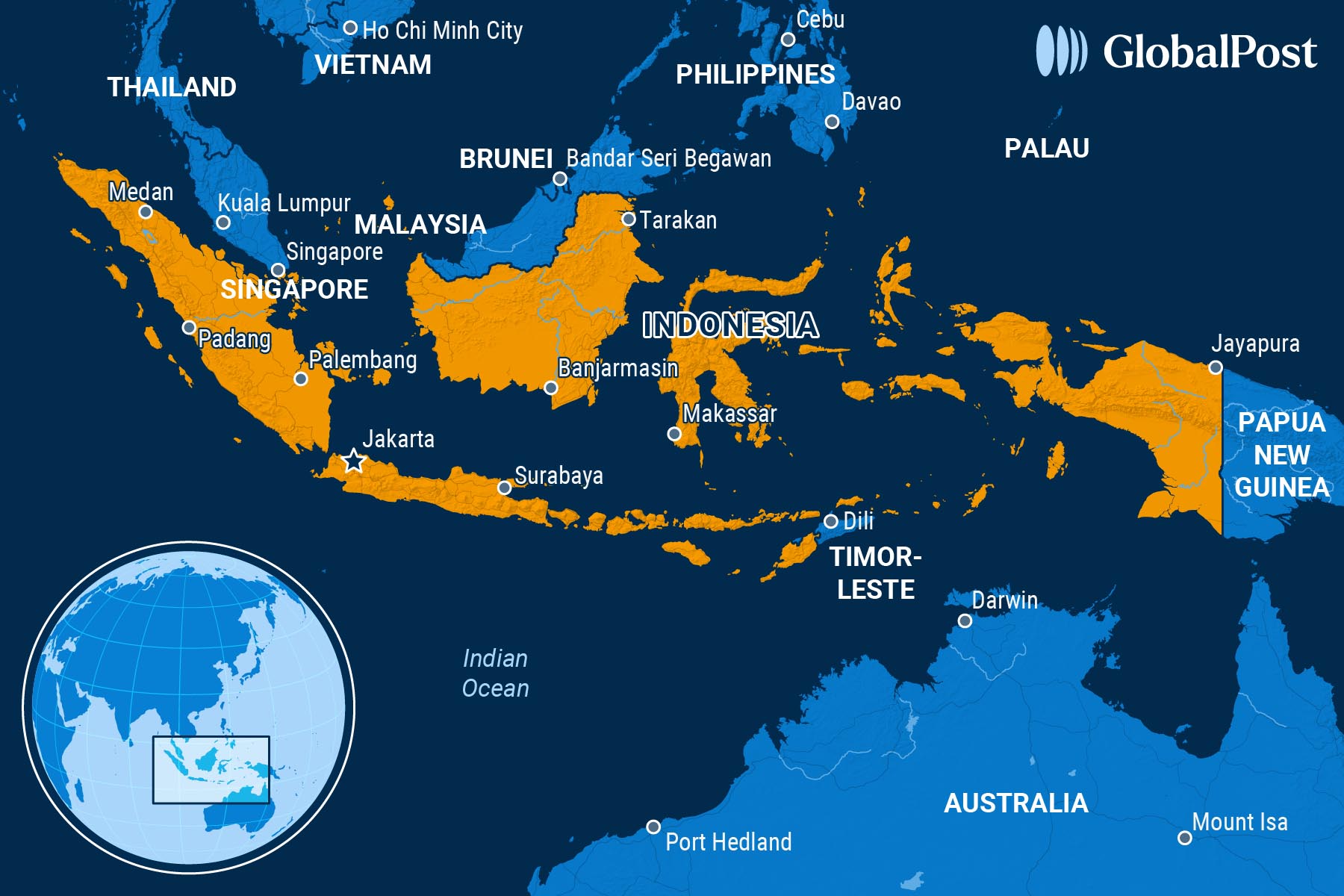Old Book, New Chapter: Bolivians To Choose New President From Among Old Faces
NEED TO KNOW
Old Book, New Chapter: Bolivians To Choose New President From Among Old Faces
BOLIVIA
 Bolivians will go to the polls on Aug. 17 amid an economic crisis that could compel the impoverished South American country to default on its debts.
Bolivians will go to the polls on Aug. 17 amid an economic crisis that could compel the impoverished South American country to default on its debts.
As voters elect a new president and lawmakers, inflation is climbing while food supplies are dwindling following poor harvests, and foreign currency reserves are so dire that severe fuel shortages in a country that used to be an energy exporter now grind the country to a halt.
Still, what is defining this political season in Bolivia, analysts say, has been the “implosion” of former Bolivian President Evo Morales’ Movement Towards Socialism party (MAS), the most potent political force in the country for the last two decades.
The party’s decline began after election officials banned Morales from running for office again, explained IntelliNews, adding that while Morales broke barriers as the country’s first indigenous head of state and pursued a left-wing agenda to help the poor, he attempted an end-run around constitutional term limits and fled the country in 2019 amid accusations of electoral fraud. Today, he faces accusations of sexual abuse that have yet to be adjudicated. He has denied the allegations as politically motivated.
Incumbent President Luis Arce, a MAS member and former Morales mentee who became a bitter rival, dropped out of the presidential race amid his poor handling of the country’s economy and turmoil following Morales’ exit and the brief presidency of former conservative Bolivian President Jeanine Áñez that followed, Al Jazeera wrote.
Before they dropped out, Arce and Morales had been feuding. In addition to holding anti-government demonstrations, Morales’ followers have accused Arce of organizing a coup to hold on to power and plotting an assassination attempt against Morales, for example, according to the Americas Society/ Council of the Americas. Some analysts argue that MAS is now irreparably split.
“The rift between one-time allies Arce and Morales has effectively split Bolivia’s most successful political party,” argued World Politics Review. “They have crashed the prospects of their party… and thrown the doors open to the opposition, which has its best chance in 20 years to win power at the ballot box.”
Now 66-year-old billionaire Samuel Doria Medina is hoping to become the country’s first right-wing president in years, reported the Associated Press. The owner of Burger King restaurants in the country is vowing to scrap fuel subsidies that are bankrupting the government, reform money-losing state-owned enterprises, and is considering opening the country’s vast mineral and other natural resources to foreign investors and developers.
Given how Bolivia is to hold a runoff in October, voters might end up choosing between two conservatives. Right-wing candidate Jorge Quiroga, a former president who served for two years in the early 2000s, is coming in a close second, followed by former military officer Manfred Reyes Villa, who ran unsuccessfully in 2002 and 2009, added BNAmericas.
Polls show none of the candidates polling above 20 percent. Arce’s replacement, Eduardo del Castillo, his minister of government, has seen single-digit support in the surveys. Andrónico Rodríguez, the president of the Senate, long seen as Morales’ heir apparent, is caught up in the rivalry between Morales and Arce.
All these mean the left-wing Bolivia of old is poised to be relegated to history, analysts say. Others, however, warn that Morales – and MAS, whatever form it reconstitutes itself into – are still the wild cards, noting how Arce polled low until election day in 2020.
Regardless, if the conservatives win, they will face uphill battles in a country that has the strongest leftist movement in the region.
“Overall, the right appears to be betting on old political figures who seem to have some confidence in an increasingly disenchanted electorate – this not only reveals the political crisis of the Bolivian right, which seems unable to launch new politicians into the electoral arena, but also an inability to reach minimum agreements,” wrote the People’s Dispatch. “These divisions could become major challenges for a neoliberal government in the Andean country, which has one of the most active social movements (Indigenous and peasant) in the entire region – movements that have been further strengthened after nearly 20 years of MAS governments.”
THE WORLD, BRIEFLY
Europe and Ukraine Remain Uneasy Ahead of Trump-Putin Summit
RUSSIA
 European leaders and Ukrainian President Volodymyr Zelenskyy pressed US President Donald Trump this week to safeguard Kyiv’s interests ahead of his high-stakes meeting with Russian President Vladimir Putin in Alaska on Friday, voicing concern that the hastily arranged summit could sideline them and lead to concessions favoring Moscow, the BBC reported.
European leaders and Ukrainian President Volodymyr Zelenskyy pressed US President Donald Trump this week to safeguard Kyiv’s interests ahead of his high-stakes meeting with Russian President Vladimir Putin in Alaska on Friday, voicing concern that the hastily arranged summit could sideline them and lead to concessions favoring Moscow, the BBC reported.
On Wednesday, Trump, European leaders, and Zelenskyy held a virtual meeting that included European Union Commission chief Ursula von der Leyen and NATO Secretary-General Mark Rutte.
During the call, Trump told the Europeans that his goal was to secure a ceasefire deal with Putin, adding that any territorial issues should only be decided with Zelenskyy’s involvement. He also said security guarantees must be part of any deal.
The US leader also warned Russia of “very severe consequences” if it doesn’t halt its war against Ukraine, although he did not clarify what those would be, according to Radio Free Europe/ Radio Liberty.
The virtual meeting came two days ahead of a summit between Trump and Putin at Elmendorf-Richardson Air Force Base near Anchorage. The upcoming summit excludes Kyiv and its European allies, prompting fears of an agreement that would mainly benefit Russia.
Following the meeting, French President Emmanuel Macron said the call “clarified” Trump’s intentions: He noted that Trump told Europe’s leaders that while NATO would not be part of any security guarantees, the US president agreed that “the United States and all the parties involved should take part,” CBS News noted.
British Prime Minister Sir Keir Starmer stressed that “international borders must not be changed by force,” adding that any deal must include “robust and credible” security guarantees.
On Thursday, Starmer met Zelenskyy in London to discuss summit expectations and long-term security arrangements. The Ukrainian leader insisted that peace would only be sustainable if the US succeeded in pressuring Russia to “stop the killings and engage in real, meaningful diplomacy.”
European leaders have insisted that Ukraine must be directly involved in any peace process, with German Chancellor Friedrich Merz warning that if Russia refuses concessions, “the United States and we Europeans should and must increase the pressure.”
Meanwhile, Putin held preparatory meetings in Russia, saying Washington was making “energetic and sincere efforts” to end the war.
Kremlin aide Yuri Ushakov said Friday’s talks would open with a one-on-one session between Trump and Putin before delegation meetings and a joint press conference. The main focus will be on Ukraine, but economic cooperation is also on the agenda.
Even so, skepticism remains high among Ukraine and its allies over worries that Kyiv would have to concede territory to Russia. Since announcing the summit, Trump has spoken of potential “land-swapping” between Kyiv and Moscow.
Russia insists on Kyiv withdrawing from four partially occupied regions in eastern Ukraine and abandoning its NATO ambitions – terms Kyiv and European allies reject.
Zelenskyy has warned that Russia would use any retained territory as a base for future attacks.
Peru Grants Amnesty for Military Crimes Committed Decades Ago
PERU
 Peruvian President Dina Boluarte on Wednesday signed into law a controversial bill providing amnesty to military personnel, police, and members of civilian self-defense groups accused of human rights abuses during the violent 1980-2000 fight against the Mao-inspired Shining Path insurgents, the Guardian reported.
Peruvian President Dina Boluarte on Wednesday signed into law a controversial bill providing amnesty to military personnel, police, and members of civilian self-defense groups accused of human rights abuses during the violent 1980-2000 fight against the Mao-inspired Shining Path insurgents, the Guardian reported.
The legislation was created for those uniformed personnel who are on trial but not yet convicted of crimes committed during the conflict between the military and the Shining Path, which led a bloody campaign to overthrow the government, the Associated Press added.
Also, those convicted who are currently over 70 will be released.
During the two-decade fight against the rebel group, about 70,000 people were killed and 20,000 “disappeared,” France 24 noted.
According to Peru’s Truth and Reconciliation Commission, most of the victims were Indigenous Peruvians caught up in clashes between security forces and Shining Path. It said the fighting led to over 4,000 secret graves in the country.
United Nations experts, who urged Boluarte to veto the law and investigate the killings and the disappearances, said it could influence 156 closed cases and more than 600 that are still open.
Human rights watchdogs, including Human Rights Watch, strongly criticized the bill, describing it as “a betrayal of Peruvian victims.” HRW added that the law damages Peru’s attempts to guarantee accountability for atrocities, further threatening the country’s rule of law.
The Inter-American Court of Human Rights urged Peru to “immediately suspend” the approval of the law – or refrain from applying it if already enacted – while the court assesses how the amnesty would impact victims’ rights.
Meanwhile, Boluarte, who has less than a year left in office and whose approval ratings are in the single digits, said the bill is the government’s way of paying tribute to the military and self-defense groups that fought terrorism.
Far-right political parties that have traditionally sided with the military, such as Popular Force, welcomed the law.
Peru has passed similar amnesty laws in 1995 and 2024.
In 2023, it pardoned former President Alberto Fujimori, who was sentenced to 25 years in prison for human rights violations carried out during his term of office, from 1990-2000.
Javanese Protest Tax Hikes, Shortened School Week
INDONESIA
 About 100,000 residents took to the streets Wednesday in Pati, a district in Indonesia’s Central Java Province, asking that the local leader resign over his controversial property tax hike and other controversial policies, Channel News Asia reported.
About 100,000 residents took to the streets Wednesday in Pati, a district in Indonesia’s Central Java Province, asking that the local leader resign over his controversial property tax hike and other controversial policies, Channel News Asia reported.
Protesters outside the Regional Administration Office in Pati carried signs reading, “Step down, Sudewo, or people will remove you by force,” referring to the executive or regent of the district, Sudewo, who goes by a single name.
While the protest was mostly peaceful, clashes broke out after demonstrators threw objects at police, which responded with tear gas and water cannons. At least 40 people were injured, including seven police officers and one journalist.
The protests were triggered by Sudewo’s plan, announced in June, to impose a 250 percent increase in property taxes in some areas of the district, which sparked outrage given the country’s economic slowdown.
While Sudewo scrapped the hike on Aug. 8 and publicly apologized under pressure from national leaders, residents went ahead with the protest, angered by his other actions that include his decision to cut the school week from six days to five, the sudden dismissal of hundreds of hospital employees without severance pay, and a plan to renovate a mosque that was recently refurbished.
During the protests, Sudewo arrived in an armored vehicle to address the crowd and apologize, according to Tribun Jateng, a local media outlet, but had to flee when the crowd responded by throwing plastic water bottles, sandals, and rotten tomatoes.
Later on Wednesday, protesters stormed the Pati Legislative Council building, prompting an emergency session where local councilors launched an inquiry into Sudewo’s policies as a possible basis for impeachment, according to the Jakarta Globe.
While saying that he “respected” the council’s decision, Sudewo refused to step down, emphasizing that protests, no matter how large, cannot remove a regent without using proper legal channels.
Meanwhile, Sudewo might also face corruption charges over his alleged role in a major railway project scandal, the Corruption Eradication Commission (KPK) said Wednesday. He is suspected of profiting from illegal funds tied to railway maintenance and construction projects.
DISCOVERIES
Birds of a Feather
Birds are among the most colorful creatures in the world – exclusively black or white avians are rare.
Now, a new study is showing a trick used by birds to make themselves even more colorful.
The study focused on a species of tanager – very colorful birds native to Central and South America – and found that the black and white feathers are crucial in making birds’ colors more vivid.
In other words, when colored feathers are put on top of a layer of either black or white feathers, their colors get a boost.
“When painters are priming their canvases with gesso – with white gesso, that’s exactly the same physical phenomenon,” study author Rosalyn M. Price-Waldman told NPR. “It’s increasing light-scattering from the canvas in order to make the pigments on top look brighter.”
A particularly surprising finding of the study was that in some species, the color difference between males and females isn’t caused by the pigments in the feathers but by variations in the amount of black or white in the underlying feather layers, explained Simon Griffith, a professor of Avian Behavioral Ecology at Macquarie University in Australia, writing in the Conversation.
Usually, male birds present more vivid colors than females.
Charles Darwin already knew that more colorful males tend to attract more mates and produce more offspring than their duller rivals.
Showcasing vivid colors, therefore, has been key to survival.
Having a layer of black underneath patches of bright blue feathers allowed male birds to produce an extra vibrancy that proved crucial in the competition for mates. This is because the feather structure scatters light to create the blue hue, while the dark under-layer absorbs other wavelengths, making the blue stand out more intensely.
Meanwhile, yellow feathers are enhanced by a white under-layer, which reflects the light that passes through the feathers, increasing the brightness of the yellow patches and making them more striking in contrast to surrounding patches of color.
After studying tanagers, researchers considered whether the same mechanism happened in other birds as well and found that a lower layer of black and white feathers enhances colors in many other species.
“This widespread use of black and white across so many different species suggests birds have been enhancing the production of color in this clever way for tens of millions of years, and that it is widely used across birds,” Griffith added.
